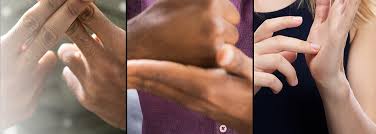Table of Contents:
-
Introduction to ASL Practice Sentences
-
Learning Basic Signs: Afternoon, Alone, and Available
-
Simple ASL Sentences for Beginners
-
Key Signs: Can, Can’t, and Concert
-
Understanding Make and Create in ASL
-
Practical Tips for Improving Your ASL Skills
-
FAQ
Introduction to ASL Practice Sentences
Learning American Sign Language (ASL) can be both exciting and rewarding. It’s a beautiful way to connect with people and express yourself. For beginners, starting with simple practice sentences can make the journey less overwhelming. This guide highlights important signs like "afternoon," "alone," and "available" while showing how to use them in everyday situations.
Learning Basic Signs: Afternoon, Alone, and Available
Afternoon in ASL
The sign for "afternoon" is straightforward and commonly used. Start with your dominant hand in a flat position, angled slightly above your non-dominant arm. This mimics the sun lowering in the sky. Pair it with phrases like "Good afternoon." For detailed instructions, check out resources like Lifeprint.
Alone and Lonely in ASL
Though similar, the signs for "alone" and "lonely" convey different emotions. To sign "alone," rotate your index finger in small circles near your chest. For "lonely," add a sad expression to emphasize the feeling. Watch examples on Handspeak.
Available in ASL
The sign for "available" is simple but impactful. Flick your hands outward, indicating something is ready or open. This is great for discussing schedules or availability. Learn it at Signing Savvy.
Simple ASL Sentences for Beginners
Practicing sentences helps you develop fluency. Start with these examples:
-
"Are you available this afternoon?"
-
"I feel lonely when I am alone."
-
"Can you help me?"
Watching videos, like those on YouTube, can improve your signing speed and accuracy.
Key Signs: Can, Can’t, and Concert
"Can" and "Can’t" in ASL
The sign for "can" is done by moving closed fists downward. To sign "can’t," use one hand to tap the index finger of your other hand. These simple gestures are used frequently in daily conversations. Find step-by-step guidance at Lifeprint.
Concert in ASL
Love music? The sign for "concert" uses gestures that mimic enjoying or performing music. It’s a fun addition to your vocabulary. Watch it in action at Signing Savvy.
Understanding Make and Create in ASL
The signs for "make" and "create" are practical and versatile.
-
To sign "make," twist your fists together, as if kneading dough.
-
For "create," move your dominant hand outward from your forehead, symbolizing an idea forming.
These signs fit sentences like "Let’s create something new" or "I want to make this." Explore more on Handspeak.
Practical Tips for Improving Your ASL Skills
-
Practice Daily: Repetition is key to mastering ASL. Dedicate at least 15 minutes a day.
-
Use a Mirror or Record Yourself: This helps you see and refine your signs.
-
Join ASL Groups: Practicing with others speeds up your learning and builds confidence.
-
Engage with Videos: Platforms like YouTube offer countless ASL tutorials.
FAQ
Q: How do you sign "anything" in ASL?
A: For "anything," swipe your dominant hand outward with a slight twist. It’s simple and useful for many situations.
Q: Is the sign for "alone" the same as "lonely"?
A: No. While the motions are similar, the expressions accompanying them differ. "Lonely" often includes a sad facial expression.
Q: What’s the best way to learn ASL quickly?
A: Stay consistent, watch videos, and practice with fluent signers. Resources like Signing Savvy are invaluable.


